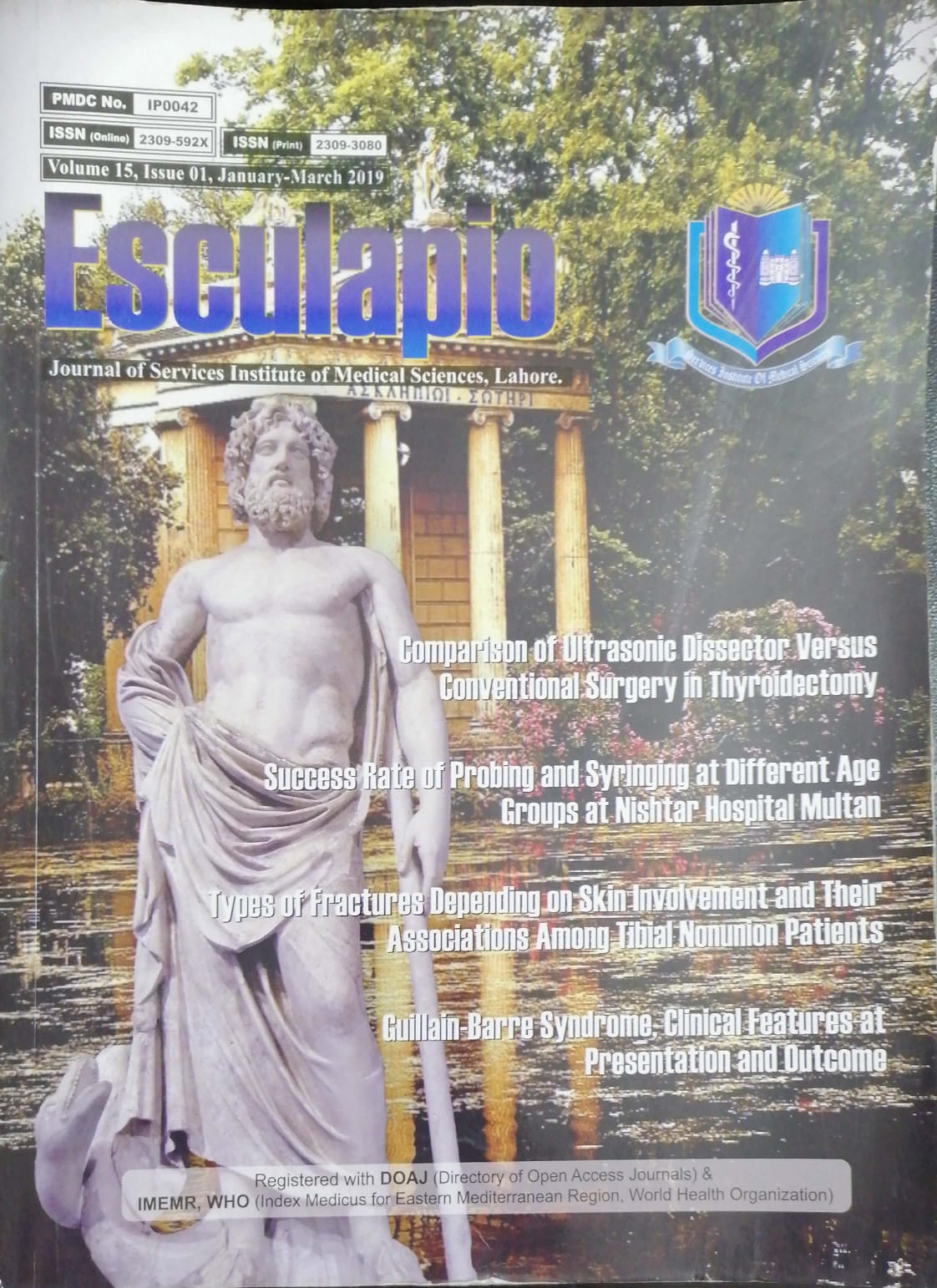Complications of NA External Fixator and Related Factors: A Retrospective Cohort Analysis in Tibial Non-union Patients
DOI:
https://doi.org/10.51273/esc19.71514Keywords:
external fixation, NA fixator, tibial non-union, complications of fixator, SPSSAbstract
Objective: To determine the complications of NA external fixator and their predictors/related
factors in tibial non-union patients in a tertiary care hospital, Lahore, Pakistan.
Methods: This was retrospective cohort analysis conducted in the Department of Orthopedics,
Mayo hospital, Lahore on the data of the patients who followed from July 2002 till June 2012.
Patients with tibial non-union of any age groups with both open and closed fractures were
included.
Results: Out of total of 144 patients, 61.8% had complications of external fixator: 44.8% (n=39)
had loosening of pin, 34.5% (n=30) had loosening of clamp, 17.2% (n=15) had breaking of pin,
and 3.4% (n=3) had breaking of clamp. The occurrence of the complications had statistically
significant association with age groups (p=0.009), presence of skin lesion (p=0.000), bone
grafting (0.031), no leg length discrepancy (p=0.000), and skin reactions to pins (p=0.000). The
occurrence of the complications had no significant association with gender (p=0.440), presence
of comorbid disease (p=0.728), side involved in fracture (p=1.000), and mode of reduction of
fracture (p=0.074).
Conclusions: Fixator complications were seen commonly in tibial non-union patients managed
with NA external fixator. Among different complications, loosening of pin was most prevalent
followed by loosening of clamp, breaking of pin, and breaking of clamp. Middle age group of
patients was more prone to the complications of fixator. Co-existing skin trauma and bone grafting
predict the subsequent occurrence of complications of external fixator. Similarly, no leg length
discrepancy and skin reactions to pins also had a positive statistical correlation with
complications of fixator. However, gender, coexisting systemic diseases, site of fracture, and
mode of reduction of fracture had no statistically significant association with occurrence of the
complications of the fixator.










